
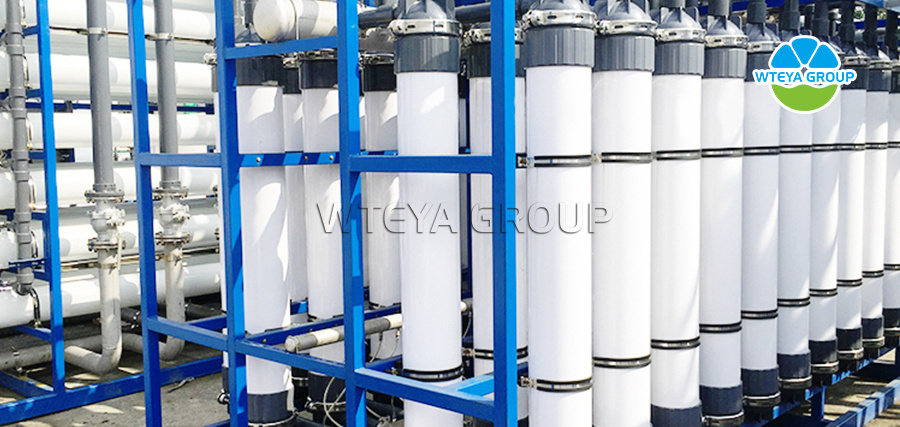
1. Ultrafiltration (UF) system
Applied in which production process
Before PCB manufacturing, it is necessary to pretreat the raw water to remove impurities such as suspended solids, microorganisms, colloids, etc. that may affect the production process. The ultrafiltration system can effectively separate these macromolecules and particles, providing a relatively pure water source for subsequent treatment. And in key production processes such as electroplating and chemical plating, cleaning, and wastewater treatment, ultrafiltration systems can provide the required pure water, while recovering and reusing some wastewater to reduce water resource waste.
Technical Principles
The technical principle of ultrafiltration (UF) system is based on membrane filtration technology, and the working core is a semi permeable membrane, also known as ultrafiltration membrane. This type of membrane has a small pore size, usually between 0.01 and 0.1 micrometers, and can intercept large molecules, suspended particles, certain bacteria and viruses in water.
When water and dissolved substances pass through the ultrafiltration membrane, water molecules and small molecules smaller than the membrane pore size can pass through the membrane pores, while large molecules larger than the membrane pore size are trapped on the surface of the membrane. This process is called the "screening effect". The interception of substances by ultrafiltration membranes is based on physical size exclusion and does not involve chemical reactions.
What effects can we achieve
As a water quality pre-treatment process, ultrafiltration systems can effectively remove suspended solids, colloids, and some high molecular weight organic substances in water, reducing the burden for subsequent deep treatments such as reverse osmosis, and protecting more refined membranes from early pollution and blockage. Ultrafiltration can recover and reuse a portion of the water resources used in cleaning and production processes, reduce water consumption, and improve the water recycling efficiency of the entire manufacturing process.
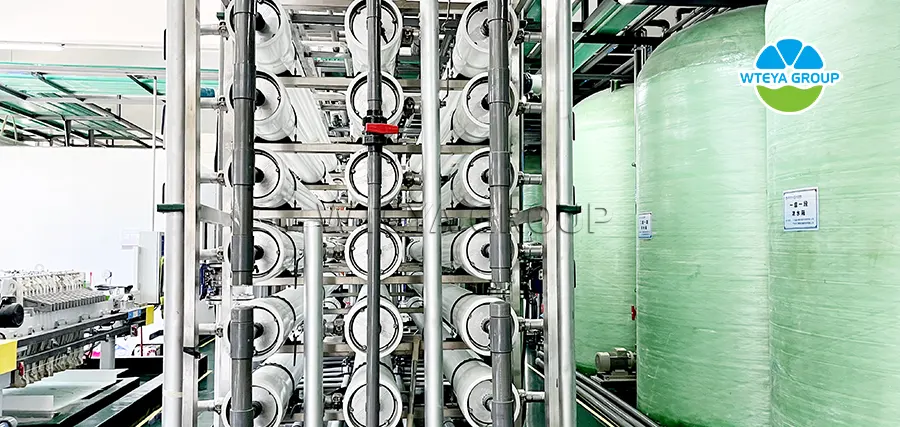
2. Reverse osmosis (RO) system
Applied in which production process
In the PCB production process, a large amount of high-purity water is required for cleaning circuit boards, electroplating, wet etching, and other processes. The reverse osmosis system can remove ions, microorganisms, organic matter, and most dissolved solids from water, ensuring that the water quality meets the process requirements. The wastewater generated during the PCB manufacturing process contains heavy metals, chemicals, and other pollutants. Reverse osmosis technology can be used for the treatment and recovery of PCB wastewater. By removing these impurities, the pressure of subsequent treatment processes can be reduced, and some purified water may be reused in the production process, achieving the recycling of water resources.
Technical Principles
The technical principle of reverse osmosis (RO) system is based on the use of semi permeable membranes to separate solvents and solutes in solution. Under pressure higher than the osmotic pressure of the solution, the solution (usually water) is forced through a selectively permeable membrane. This membrane has extremely small pores that are sufficient for water molecules to pass through, but it can block most ions, organic matter, as well as larger molecules or particles such as bacteria and viruses. Therefore, when the mixture of water and impurities is pressurized and fed into the reverse osmosis system, water molecules are pushed towards the membrane and pass through the membrane pores, forming purified water (permeate), while solutes (such as salt and other impurities) are trapped on one side of the membrane, thus separating pure water and concentrated wastewater (concentrated water). During the reverse osmosis process, the selectivity of the membrane and the applied pressure are key factors that determine the separation efficiency and water production quality of the system.
What effects can we achieve
Reverse osmosis systems can effectively remove ions, microorganisms, organic matter, and most soluble solids from water, providing high-purity water for precision cleaning, electroplating, wet etching, and other processes. It can reduce the deposition of impurities on PCB boards, reduce product defect rates, and improve overall production quality. This is crucial for avoiding circuit short circuits and ensuring the quality of PCB boards. At the same time, the reverse osmosis system can treat wastewater containing heavy metals and other chemicals generated during the production process, purify some of the wastewater and reuse it for the production process, saving water resources and reducing production costs.
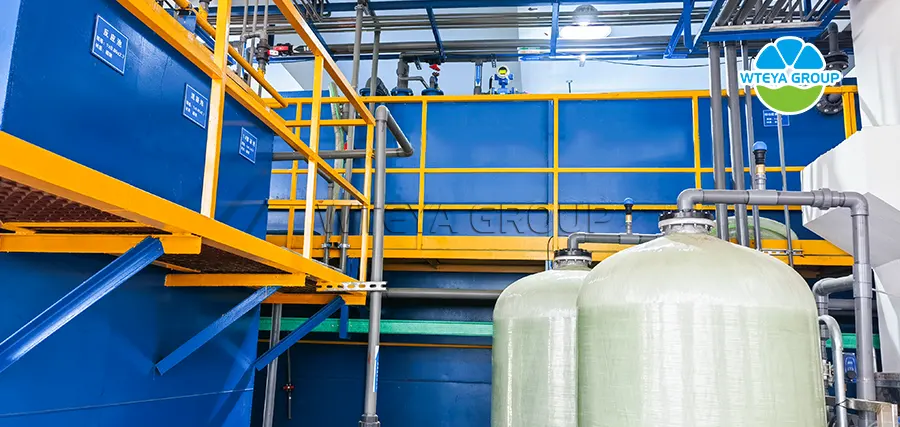
3. Integrated equipment
Applied in which production process
Integrated sewage treatment equipment plays a crucial role in the PCB (Printed Circuit Board) circuit board industry, effectively treating various types of wastewater generated in the industry. The PCB production line involves various chemical treatment processes, including plate grinding, etching, electroplating, hole metallization, development, and film removal. These processes generate wastewater containing complex components such as high concentrations of heavy metals, organic solvents, acids and bases, suspended solids, and surfactants. In order to ensure environmental protection, compliant discharge, and resource recycling, integrated sewage treatment equipment provides a solution that integrates multiple treatment units, with specific applications reflected in the following aspects:
- Wastewater classification and pretreatment
Integrated equipment will first classify and collect PCB circuit board wastewater, as the nature of wastewater generated by different processes varies greatly and requires targeted treatment. The pre-treatment stage may include grids, sedimentation tanks, regulating tanks, etc., which are used to remove large particle suspended solids, regulate the pH value and flow rate of wastewater, and create suitable conditions for subsequent treatment.
- Heavy metal removal
PCB wastewater contains heavy metal ions such as copper, nickel, lead, and chromium, posing a potential threat to the environment and human health. Integrated equipment typically uses technologies such as chemical precipitation, ion exchange, adsorption, or membrane separation to remove heavy metals. For example, by adding precipitants to form insoluble precipitates of heavy metal ions, and then removing them through solid-liquid separation equipment (such as sedimentation tanks, air flotation machines); Alternatively, adsorption materials such as chelating resin and activated carbon can be used to adsorb heavy metal ions; In some cases, membrane separation technologies such as reverse osmosis (RO) and nanofiltration (NF) may also be used for advanced treatment.
- Organic degradation
The organic matter in circuit board wastewater mainly comes from cleaning agents, developer, ink, etc. Integrated equipment typically includes biochemical treatment units, such as anaerobic bioreactors, aerobic bioreactors (such as activated sludge, biofilm), or MBRs (membrane bioreactors), which utilize the metabolic processes of microorganisms to convert organic matter into carbon dioxide and water. The MBR integrated sewage treatment equipment is particularly suitable for treating PCB wastewater containing complex organic compounds due to its efficient solid-liquid separation ability and high effluent quality.
- Reclaimed water reuse and zero discharge
In order to save water resources and reduce emissions, integrated equipment often integrates reclaimed water reuse systems. After the above treatment, the wastewater is further purified through deep filtration (such as sand filtration, activated carbon filter), membrane separation (such as ultrafiltration, reverse osmosis) and other technologies. After reaching the reuse standard, it is reused for cleaning the production line or other non drinking water purposes. For high salinity or high concentration refractory organic wastewater that is difficult to treat through conventional techniques, technologies such as evaporative crystallization, electrodialysis, and forward osmosis may be used to achieve near zero discharge (ZLD).
Technical Principles
This type of equipment mainly adopts primary, secondary, and tertiary treatment technologies such as natural sedimentation and coagulation sedimentation technology, filtration, centrifugal separation technology, and biochemical technology for sewage purification and treatment.
What effects can we achieve
We can achieve fully automated operation and unmanned operation of such devices, saving a lot of manpower; The removal efficiency of suspended solids (SS) can reach 80-95%, and the removal efficiency of organic matter can reach over 80%.
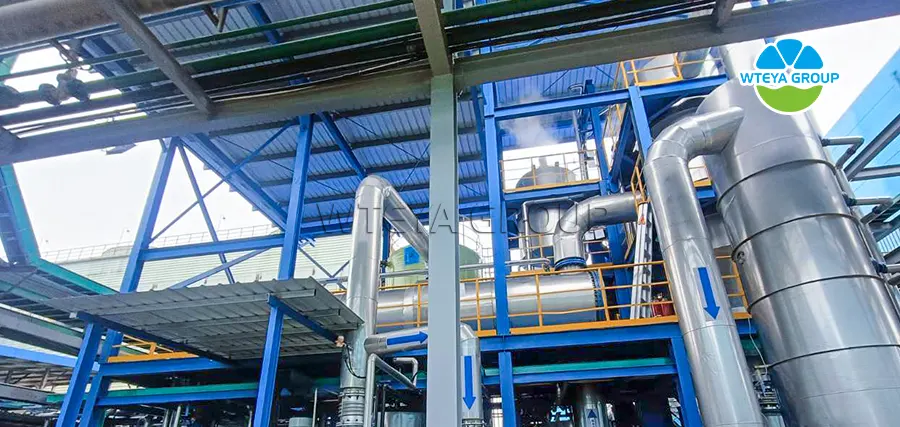
4. Evaporation equipment
Applied in which production process
Evaporation equipment is mainly used in the PCB (Printed Circuit Board) circuit board industry to treat high salinity and high concentration organic wastewater, achieving wastewater reduction, resource recovery, and zero liquid discharge (ZLD). In the PCB production process, especially in electroplating, etching, and development processes, wastewater containing high concentrations of heavy metal salts, organic solvents, surfactants, and other components is generated, with high salt content. Direct discharge can cause serious environmental pollution. As a key equipment for advanced wastewater treatment, the application of evaporation equipment in the PCB circuit board industry mainly includes the following aspects:
- Evaporation concentration of high salinity wastewater
Evaporation equipment (such as multi effect evaporators, mechanical vapor re compression evaporators (MVR), thermal vapor re compression evaporators (TVR), etc.) heat wastewater to evaporate its moisture, concentrate it to a near saturated state, greatly reduce the volume of wastewater, and achieve wastewater reduction. This is of great significance for reducing the difficulty of subsequent wastewater treatment, reducing the cost of wastewater treatment, and lowering the final disposal cost of wastewater.
- Salt crystallization and resource recovery
The concentrated high salinity wastewater can be separated from inorganic salts (such as sulfates, chlorides, nitrates, etc.) by cooling, crystallization, or salt precipitation to form crystal salts. After further processing, some of these crystal salts can be sold as by-products to achieve resource recovery; The parts that cannot be recycled must be safely disposed of according to regulations to avoid secondary pollution to the environment.
- Organic matter concentration and recovery
For wastewater containing high concentrations of organic matter, evaporation equipment can separate organic matter from water. The concentrated organic matter solution can be further recovered with valuable organic components such as cleaning agents, solvents, etc. through distillation, extraction, adsorption and other technologies, reducing production costs and achieving circular economy.
- Near zero emissions (ZLD)
In areas with strict environmental requirements or water scarcity, PCB companies may need to achieve near zero discharge of wastewater. The evaporation equipment, combined with crystallization, drying and other technologies, can almost completely remove moisture from wastewater, leaving only solid residues, thus achieving the goal of zero discharge of wastewater. This not only helps companies meet strict environmental regulations, but also helps to protect water resources and achieve sustainable development.
- Waste heat utilization and energy conservation
In the design of modern evaporation equipment, emphasis is placed on energy efficiency. Through technologies such as multi effect evaporation and steam recompression, the steam generated by the previous effect of evaporation is used as the heat source for the next effect, achieving energy cascade utilization and greatly reducing energy consumption. In addition, some equipment can also be combined with the factory's waste heat recovery system, using the waste heat generated during the production process as a heat source for evaporation, further saving energy.
Technical Principles
- MVR evaporator equipment: The MVR evaporator reuses the energy of the secondary steam it generates, thereby reducing the demand for external energy. The working process of MVR is to compress the low-temperature steam through a compressor, increase the temperature and pressure, increase the enthalpy, and then enter the heat exchanger for condensation to fully utilize the latent heat of the steam. Except for start-up, the entire evaporation process does not require the generation of steam. The secondary steam coming out of the evaporator is compressed by the compressor, which increases pressure and temperature, enthalpy, and then sent to the heating chamber of the evaporator for use as heating steam, maintaining the boiling state of the material liquid.
- Forced circulation evaporation equipment: The circulation of solution inside the equipment mainly relies on the forced flow generated by external force. The cycle speed can generally reach 1.5-3.5 meters per second. High heat transfer efficiency and production capacity. The raw material liquid is pumped from bottom to top by a circulating pump and flows inward and upward along the heating chamber tube. After entering the evaporation chamber, the mixture of steam and liquid foam separates, and the steam is discharged from the upper part. The fluid is blocked and falls down. It is sucked in by the circulation pump at the conical bottom and then enters the heating tube to continue circulation. It has a high heat transfer coefficient, resistance to salt precipitation, anti scaling, strong adaptability, and is easy to clean. Suitable for evaporative concentration in chemical, food, pharmaceutical, environmental engineering, waste liquid evaporation and recovery industries with scaling, crystallinity, thermal sensitivity (low temperature), high concentration, high viscosity, and insoluble solids.
- Low temperature evaporation equipment: Low temperature evaporation refers to an evaporation process that operates at temperatures generally between 35-50 ℃. After the raw water bucket reaches the middle liquid level, the water pump operates to generate a vacuum, and the evaporator automatically receives water. The compressor operates to generate heat to heat the wastewater in the evaporation tank. Under vacuum, the wastewater temperature rises to around 30 ℃, and the wastewater begins to evaporate. Preheating is completed. The evaporation temperature is set to 35-40 ℃, and the compressor compresses the refrigerant to generate heat. While the water evaporates rapidly, the refrigerant absorbs heat and cools through the expansion valve after gasification. The vapor rises and liquefies with the cold liquid, entering the water storage tank. The refrigerant absorbs heat and compresses it through the compressor to heat up the wastewater. If there are bubbles rising during the evaporation process, the sensor will detect it and automatically add defoamer. After one cycle is completed, the concentrated solution will be discharged (the time of one cycle can be set). After one evaporation cycle is completed, the compression pump stops working, the pneumatic valve of the concentration liquid pipeline opens, the evaporation tank is pressurized, and the concentration hydraulic pressure is fed into the concentration tank.
What effects can we achieve
Our company's evaporation equipment can achieve a concentration ratio of 5-100 times under different water quality conditions. Evaporators have been widely used in various industries such as food industry, pharmaceutical industry, chemical industry, environmental protection, and energy due to their high efficiency, energy efficiency, strong adaptability, high degree of automation, environmental safety, and stable operation.
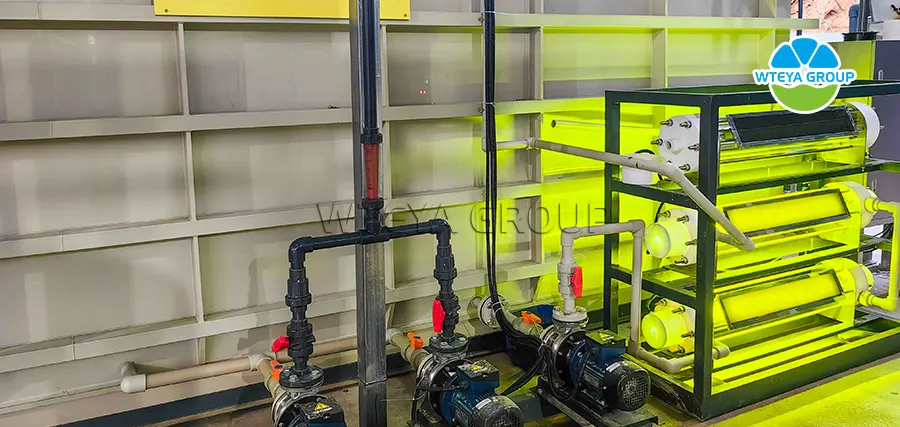
5. ECC catalytic oxidation equipment:
Applied in which production process
Catalytic oxidation equipment is mainly used in the PCB circuit board industry to treat organic wastewater. Through catalytic oxidation technology, organic pollutants are effectively degraded, their impact on the environment is reduced, and wastewater discharge meets standards. The application of these devices and technologies is of great significance for improving the efficiency of wastewater treatment in the PCB industry, achieving environmental protection goals, and promoting green development of the industry. The specific applications are as follows:
- Organic wastewater treatment
During the PCB production process, processes such as cleaning, development, and film removal will generate wastewater containing organic solvents, surfactants, resins, photoresists, and other organic substances. Catalytic oxidation equipment, such as electrocatalytic oxidation (ECO), ozone catalytic oxidation (OCO), Fenton oxidation, etc., use catalysts to accelerate the chemical reaction between organic matter and oxidants (such as oxygen, ozone, hydrogen peroxide) under specific conditions, converting them into harmless or low toxic substances such as carbon dioxide, water, and inorganic salts. These technologies can effectively degrade difficult to degrade organic pollutants in PCB wastewater, improve the biodegradability of wastewater, create favorable conditions for subsequent biochemical or deep treatment, and ensure that wastewater meets discharge standards.
- Heavy metal wastewater treatment
Although catalytic oxidation equipment mainly targets organic pollutants, in some cases, such as the strong oxidizing · OH generated during Fenton oxidation, it may also help oxidize some heavy metal ions, transforming them into precipitates and assisting in the removal of heavy metals. However, for the high concentration heavy metal wastewater generated in the PCB industry, more specialized heavy metal treatment technologies such as chemical precipitation, ion exchange, adsorption, and membrane separation are usually needed for effective treatment.
- Collaborative treatment of composite wastewater
In practical applications, catalytic oxidation equipment may be combined with other wastewater treatment technologies (such as biological treatment, membrane separation, adsorption, etc.) to form a combined process to jointly treat complex and composite wastewater generated in the PCB industry. For example, by efficiently degrading recalcitrant organic compounds in wastewater through catalytic oxidation, their biodegradability can be improved, and then biological treatment can be carried out to further remove organic compounds and ammonia nitrogen; Alternatively, in the advanced treatment stage, catalytic oxidation technology can be used to deeply purify the preliminarily treated wastewater, ensuring that the effluent quality meets the standard.
Technical Principles
ECC catalytic oxidation technology is a new technology developed by our company, which uses catalysts to promote the oxidation reaction between organic pollutants and oxidants (such as oxygen, ozone, hydrogen peroxide, etc.) under specific conditions, generating harmless or low toxic final products, and achieving effective removal of pollutants. Different catalytic oxidation equipment adopts different oxidants, catalysts, and reaction conditions according to different application scenarios and processing objects to meet various practical needs.
What effects can we achieve
The removal efficiency of such products by the company for organic matter (CODcr) can reach below 80%, and some can exceed 95%. It can also greatly reduce the probability of foam occurrence in high temperature reaction kettle and evaporation equipment and the scaling of membrane system.
Get a free quote!
Let professionals help you choose
Our Customers And Services










